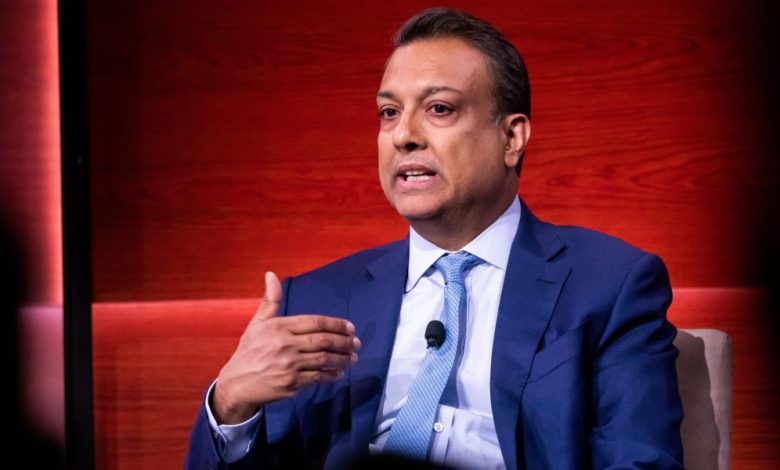The CEO of India’s largest renewable energy company predicts “great progress” in climate protection over the next few years

The continuing flood of negative headlines from the economy and the environment gives real reason for optimism, at least when it comes to the energy transition. The next few years are crucial to keep global warming at a manageable level. Encouragingly, we expect great progress in the transition to renewable energy in all industries and regions in the next few years.
First, and perhaps most importantly, the Anti-Inflation Act is already a transformative piece of climate legislation. Thanks to the favorable environment created by the legislation, most major international renewable energy companies are now exploring opportunities within the US. Internationally, the IRA has sparked a race between countries to incentivize green investment.
The private sector is fast becoming a key player in the fight against climate change. Almost all major companies have committed to reducing emissions and have started to make progress towards reducing at least their own emissions (Scope 1 and 2). The next step is Scope 3 emissions – those caused by factors not directly under a company’s control.
Another sign of growing corporate interest is the growing use of Power Purchase Agreements (PPAs). Businesses are increasingly seeking access to reliable renewable energy, a need that led to a 34% annual price increase for PPAs between Q3 2021 and Q3 2022. ReNew has witnessed this surge firsthand: over the past year, we’ve signed PPAs with Amazon, Microsoft, and several other large companies.
Even fossil fuel companies are trying to get into renewable energy. As demand for fossil-fuel energy has skyrocketed over the past year (and corporate revenues have tripled), investors are urging oil and gas companies to focus on renewable energy. There is a deep understanding that the short-term positive effects of dirty energy will not change the long-term outlook for the sector. The answer? More investment in renewables.
Green hydrogen and green ammonia are gaining momentum faster than expected. Utilities, investors, traders, industrial energy consumers, manufacturers and logistics providers are all looking for opportunities in the green hydrogen value chain. In the past year, the biggest perceived challenge was finding buyers due to a lack of competitiveness with gray hydrogen. It is no longer the case. The green hydrogen train has left the station.
Similarly, we see emerging technologies with the potential to revolutionize energy supply chains and the efficiency of renewable sources. Quantum computing, artificial intelligence, and emerging advances in fusion all point to a future where 24/7 clean energy is possible at scale. Much of this technology is still five to ten years away, but the future is becoming increasingly clear. It’s clean energy.
However, challenges remain. To thrive, leading global companies must grapple with the remaining uncertainty surrounding clean energy investments. Businesses around the world are itching to embrace renewable energy – concerns over protectionism and trade disputes are still holding back investment. Most countries in North America, Europe and Asia are looking for ways to keep green energy production local. This would be a mistake. Instead, we need a global approach to the global problem of climate change.
We should not allow geopolitics to delay innovation. Global disputes and sanctions threaten to delay the development and introduction of world-changing technologies. Leaders need to understand that tackling our global climate crisis should be a top priority.
We must also reduce investment in “anti-climate” finance. As oil and gas companies transition to renewable energy, a large percentage of their investments, as well as the investments of large asset owners, remain in dirty energy or related sectors. In the next few years, the world will need to reallocate this money from dirty sectors to clean sectors.
There are reasons for hope. The hole in the ozone layer is shrinking, according to a report by a UN panel of experts. While climate change has receded into the background in recent decades, the hole in the ozone layer was the first truly global atmospheric-related problem. This early success shows that problems can be solved when humanity commits to tackling a problem together.
Let’s make 2023 a climate year that will go down in history actionnot just promises.
Sumant Sinha is the Founder, Chairman and CEO of ReNew Power.
The opinions expressed in Fortune.com comments are solely the views of their authors and do not necessarily reflect the opinions and beliefs of wealth.
More must-read comments posted by wealth:
Learn how to navigate and build trust in your organization with The Trust Factor, a weekly newsletter exploring what leaders need to succeed. Login here.



